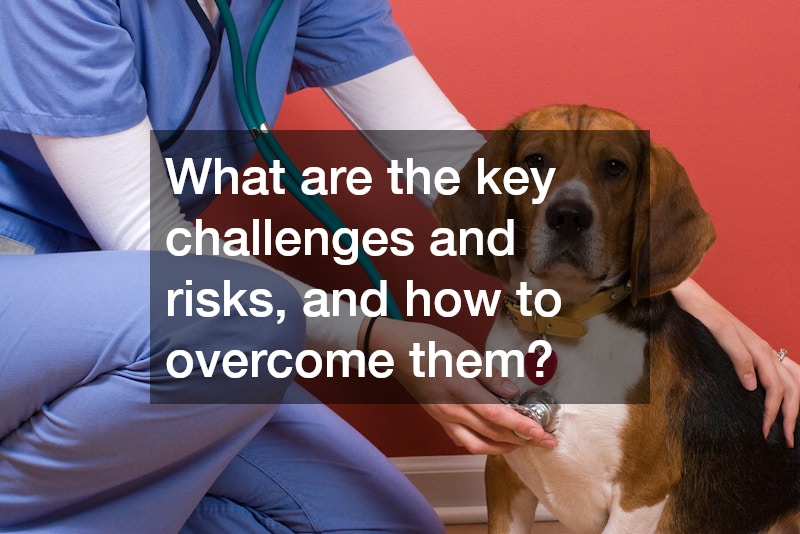The growing pet care industry is witnessing a surge in demand for specialized services, including pet urgent care facilities. Establishing a pet urgent care center requires a thorough understanding of consumer needs and a comprehensive business approach to tap into and thrive in this niche market. In this article, we explore a business plan for pet urgent care services.
What are the essential components of a pet urgent care business plan?
Market Analysis
Market analysis is the cornerstone of any successful business plan, especially in the pet care industry. Understanding recent trends, such as the increase in pet adoption and the rising awareness of pet health, is essential for identifying opportunities.
Target demographics in the pet urgent care sector typically include pet owners who prioritize immediate and high-quality healthcare for their pets. Competitors in this field range from general veterinary services to specialized pet emergency centers, each offering varying levels of care and expertise.
Conducting a market analysis will provide insights into consumer behaviors and preferences, helping to tailor services accordingly. Additionally, understanding your competition can guide strategic planning to differentiate your business offerings effectively.
Operational Structure
A well-defined operational structure is critical for the smooth functioning of a pet urgent care facility. Clearly outlining staff roles and responsibilities ensures that each member of the team knows their specific duties and can work efficiently.
Staffing considerations should include licensed veterinarians, veterinary technicians, administrative personnel, and support staff to manage daily operations. Implementing streamlined processes will aid in managing patient intake, treatment protocols, and record-keeping efficiently.
By establishing a cohesive operational structure, a business can maintain high service standards while optimizing resource use. Aspects such as shift scheduling and emergency response plans are vital for maintaining continuous service availability.
How can you secure funding for your pet urgent care startup?
Funding Sources
Securing adequate funding is a pivotal step in launching a pet urgent care business. Potential funding sources include private investors, small business loans, and veterinary service grants designed to support healthcare initiatives.
Building a compelling case to attract investors requires detailed knowledge of the industry’s potential, alongside well-researched financial models. Identifying the right mix of funding options can provide the financial stability needed to cover startup costs and operational expenses.
Networking within the veterinary community and attending industry events can also open doors to potential funding opportunities. Establishing connections with fellow professionals can lead to collaborations and funding partnerships.
Financial Projections
Financial projections serve as a roadmap for the business, outlining expected revenues, expenses, and profit margins. Accurately forecasting financial performance helps gain the confidence of potential investors and stakeholders.
Considering factors such as recurring operational costs, equipment purchases, staff salaries, and marketing expenses is crucial for creating realistic projections. Demonstrating a clear path to profitability enhances the attractiveness of the business proposition.
A well-structured financial plan can support strategic decision-making and provide metrics for measuring business success. Regularly revisiting and adjusting financial forecasts ensures alignment with market conditions and business growth.
What legal and regulatory considerations are there?
Licensing and Certification
Compliance with legal requirements is essential for the operation of a pet urgent care facility. Obtaining the necessary licenses and certifications is the first step to ensuring legitimacy and trustworthiness in the eyes of clients.
The veterinary industry is heavily regulated, with requirements varying by state and country. Understanding these regulations is necessary to meet all legal obligations and avoid potential legal issues.
In addition to practice licenses, facilities must ensure that all veterinarians are certified and meet ongoing education requirements. Keeping up-to-date with changes in legislation is crucial to maintaining compliance and operational readiness.
Compliance with Health and Safety Standards
Pet urgent care facilities must adhere to strict health and safety standards to provide high-quality care. These standards cover aspects such as sanitation, equipment maintenance, and staff training to ensure a safe environment for patients and staff alike.
Compliance extends to meeting local, state, and federal regulations, with periodic inspections often required to verify adherence. Implementing robust health and safety protocols minimizes the risk of accidents and increases the overall security of the facility.
Moreover, transparency in health and safety practices can boost client confidence and foster a positive reputation. Continuous monitoring and improvement of these practices are vital for sustained operational success and client satisfaction.
How to effectively market pet urgent care services?
Digital Marketing Strategies
In today’s digital era, leveraging online platforms and social media is key to reaching a wider audience. A strong online presence allows pet urgent care facilities to showcase their services, share educational content, and connect with potential clients.
Utilizing search engine optimization (SEO) techniques, sponsored ads, and engaging social media campaigns can drive traffic to the business’s website. Engaging content and positive online reviews can significantly enhance a facility’s reputation and visibility.
Community Engagement
Building a strong local presence is crucial for the success of a pet urgent care service. Engaging with the community through events, partnerships, and promotions fosters loyalty and trust among potential clients.
Participating in local pet fairs, health workshops, and collaborating with animal shelters can enhance visibility and reputation. Such interactions create opportunities to educate pet owners about urgent care services and demonstrate expertise in animal health.
What are the key challenges and risks, and how to overcome them?
Managing Competition
The pet care industry is competitive, with numerous options available to pet owners. Differentiating your services through unique selling propositions, such as specialized treatments and exceptional customer service, is vital to staying competitive.
Understanding competitors’ strengths and weaknesses can help identify gaps in the market that your business can capitalize on. Developing a distinct brand image and continuously innovating allows a facility to remain a step ahead in the market.
Operational Risks
Operational risks can impede daily activities and affect service delivery. Identifying potential risks, such as equipment failures, staff shortages, and emergencies, is crucial for devising effective mitigation strategies.
Implementing comprehensive risk management plans ensures preparedness and minimizes disruptions. Investing in high-quality equipment and regular maintenance checks can prevent unexpected failures and maintain operational efficiency.
.




